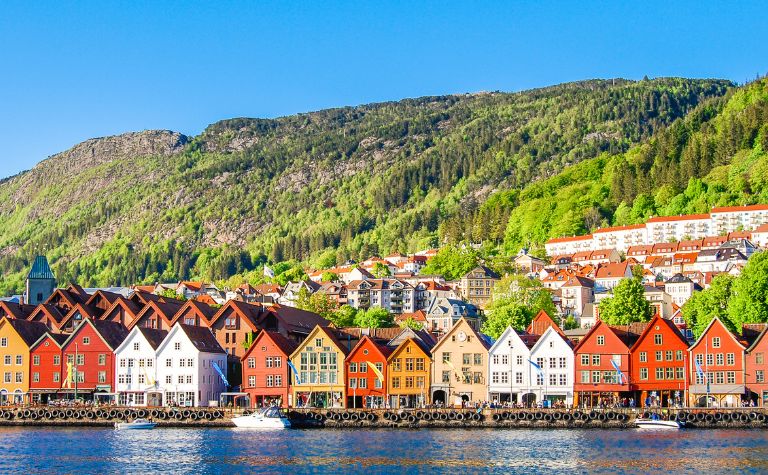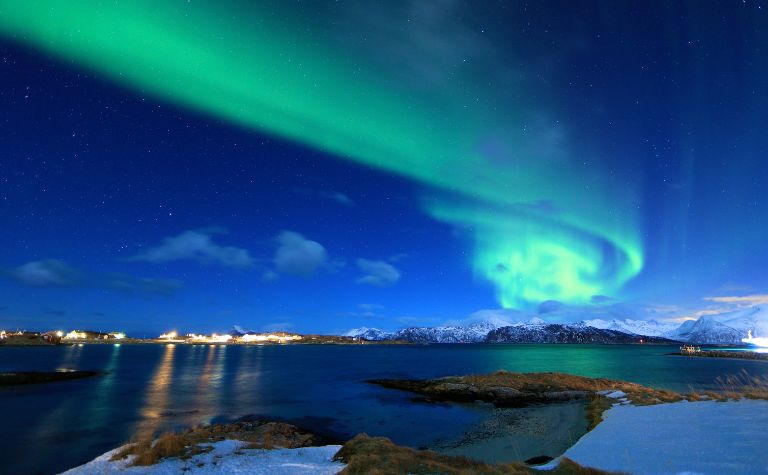The weather isn’t the only commonality between many Scandinavian countries because they also have similar flags. So, why do Scandinavians have similar flags?
Scandinavians have similar flags because they’re based on the original Danish cross flag (also known as the Dannebrog), representing Christianity.
Scandinavian countries were highly religious throughout history, so it makes sense that each flag displays a cross.
This article will discuss how Christianity influenced Nordic flags. It will also discuss why each Scandinavian country has a similar flag and whether or not each flag represents the same things.
Also, see Why Do Scandinavians Have Small Noses? to learn more.

How Christianity Influenced Nordic Flags
Throughout Scandinavian and European history, Christianity was a large part of the culture.
Religion was also a motivation to get through wars and battles; soldiers would bring their national flags to war, flying them around as they fought until death.
Denmark was the first to use what is now known as the Scandinavian (or Nordic) cross.
The Danish flag was often brought to battles for good luck and national representation.
Since Denmark ruled other Nordic countries over the years (like Iceland and Norway), they were influenced by the flag and made their own similar national flags after gaining independence.
It was important to have Christian representation in each national flag, so it made sense to adopt the Nordic cross.
Other Influences
Although each flag represents religion, Christianity wasn’t the only thing that influenced each Nordic country to have similar flags.
Scandinavian countries have been closely tied through the years, not to mention they’re close together physically.
So naturally, they have developed similar tendencies and traditions, as much of their history is the same or shared.
The three main Scandinavian countries even share certain holiday traditions, like celebrating Christmas on the 24th rather than the 25th.
Denmark was the most powerful Scandinavian country for centuries, as it ruled over and colonized countries in Scandinavia and beyond. Some countries that Denmark ruled over include:
- Iceland
- The Faroe Islands (currently a part of the Kingdom of Denmark)
- Greenland (still technically a part of the Kingdom of Denmark, but Home Rule was granted in 1979)
- Norway
As Denmark was such a powerful force throughout Scandinavia, it significantly influenced the decisions of its neighbors, including their decisions to use Nordic crosses on their flags.
Also, see Why Do Scandinavians Have Colorful Houses? to learn more.

Why Each Scandinavian Country Has a Cross Flag
Now let’s look at each country’s flag and why they all have similar crosses.
Denmark
Denmark was the first country to use the cross on the flag. Sweden and Norway eventually followed.
Denmark’s flag story goes back to the legend of 1219, where the Danish cross flag “fell from the sky” during battle.
Eventually, Denmark won the battle and started using it as its national flag (or so the legend says).
It was used as a royal flag for a few centuries until the 1800s when citizens were finally allowed to use it personally (i.e., on the streets and in their homes) [1].
For Denmark, the flag was and still is an appreciation and display of Christianity.
Even though it dates back to as early as the 1200s, the Danish flag was officially adopted in 1625 [2].
Sweden
Sweden is another Scandinavian country with a similar flag, and it’s generally assumed that it’s based on the Danish one [3].
However, the proportions are slightly different, and the colors are gold and blue, unlike the colors on Denmark’s national flag (red and white).
While the Swedish flag may be based on the Danish one, it also represents Christianity. The flag colors were likely based on the Swedish coat of arms (blue and gold/yellow).
Like Denmark, Sweden used its flag long before it became the nation’s official flag (which eventually happened in 1906).
Norway
Norway has had different flags throughout history, including the lion flag. The lion flag was known as the flag of the King of Norway from the 13th Century.
However, while the country was under Danish rule until the 1800s, it used the Danish cross flag. Norway also had a hybrid war flag with Sweden.
A while after Norway became independent from Denmark, the modern red, navy, and white Norwegian flag was created based on the original Danish flag.
As with the other Scandinavian cross flags, the Norwegian one was also supposed to be a symbol of Christianity, as the religion was highly prevalent at the time.
Also, see What do Scandinavians Think of Finns? to learn more.
Iceland
Other Nordic countries, like Iceland, started using their own cross flags after gaining independence.
For example, Iceland started using its flag around the time it was declared a sovereign state (in the early 1900s) by Denmark.
However, it wasn’t fully independent at that time–Iceland became fully independent during World War II (1944).
Before that, the country used the Danish flag, as did Norway.
Norway and Iceland were essentially ruled by Denmark, so it made sense for both countries to use the flag.
The national flag of Iceland is based on the design of the Danish flag and represents Christianity.
Finland
After Finland went from being a part of Sweden to being ruled by Russia (around 1809), it didn’t have its own official flag.
Finland was ruled for over a decade but eventually gained independence in the 1900s, so it needed a new national flag for representation.
The Finnish cross flag was subsequently created, with a blue cross over a white background.
According to Britannica, the white background symbolized the Finnish snow, and the blue color on the cross symbolized the different lakes across the country [4].
The cross itself represents religion (Christianity) and is based on other Scandinavian crosses.
Also, see Why Aren’t Scandinavians Religious? to learn more.
Faroe Islands
The Faroe Islands flag is similar to other Nordic flags, as it features the off-center cross representing Christianity.
It’s likely that the Faroe Islands flag is based on the Danish flag because the two countries have been closely tied for centuries.
It even features two of the colors that appear on the Danish flag–red and white.
The red and blue colors on the Faroe Islands’ flag represent the bond the Faroe Islands have with other Nordic nations [5].

Do All Scandinavian Flags Represent the Same Thing?
All Scandinavian flags generally represent the same thing–Christianity. However, each flag is slightly different from the other, with different colors representing different things.
For example, the red background on the Danish cross is said to represent battle, while the blue on the Finnish flag represents lakes.
So while the cross represents religion on each Scandinavian flag, the colors within the crosses and the backgrounds of the flags mean different things.
Each flag also represents the historical ties between the Nordic countries.
Also, see Why Do Some Scandinavians Have Dark Hair? to learn more.
References:
[1] Denmark: Dannebrog: The flag that fell from the sky
[2] Guinness World Records: Oldest Continuously Used National Flag
[3] Nordic Co-Operation: The Swedish Flag
[4] Britannica: Flag of Finland
[5] Faroe Islands: Merkið – the Flag of the Faroe Islands
